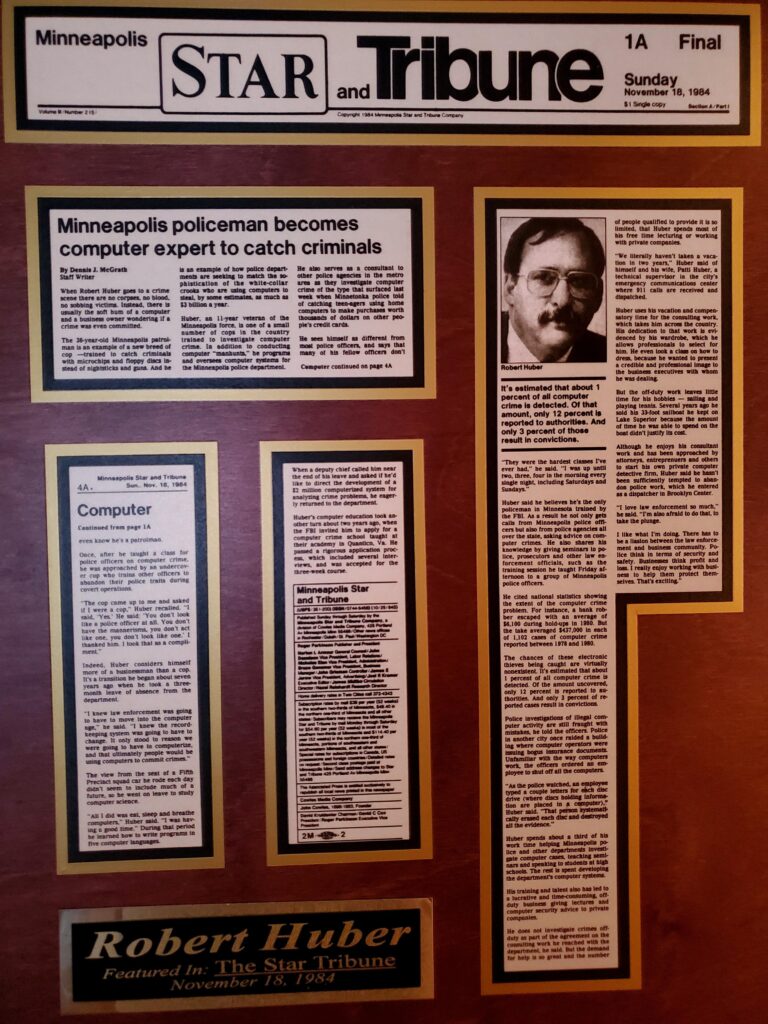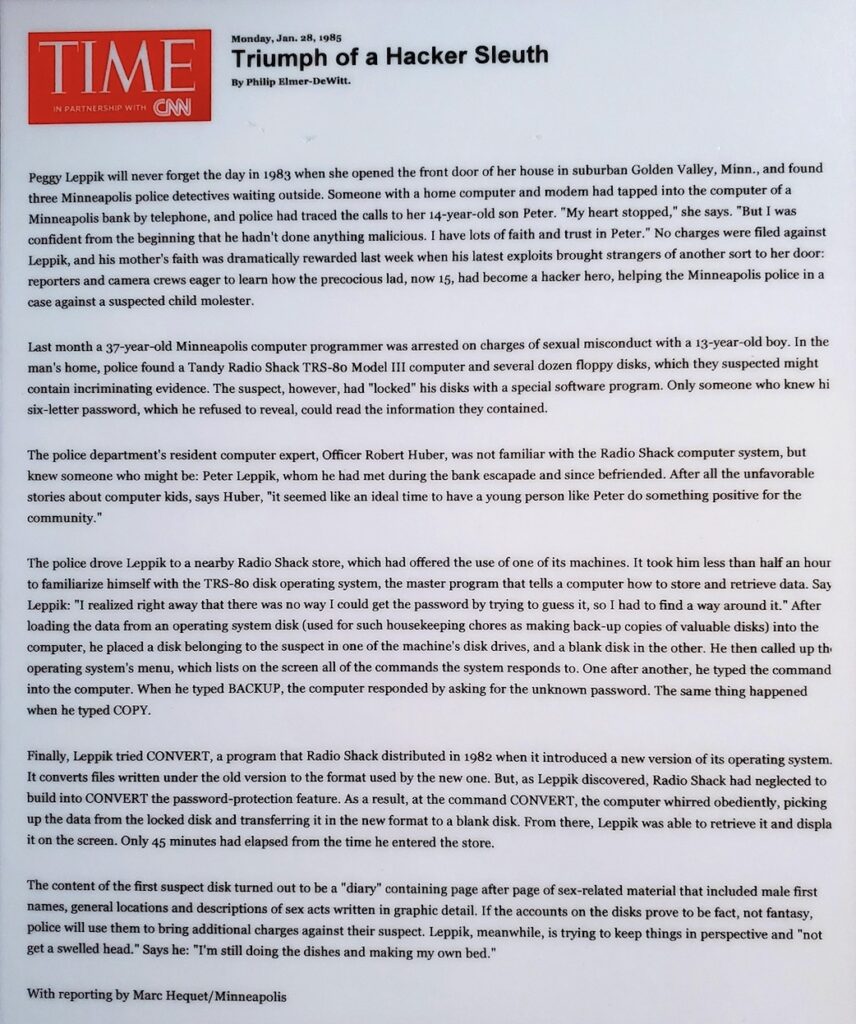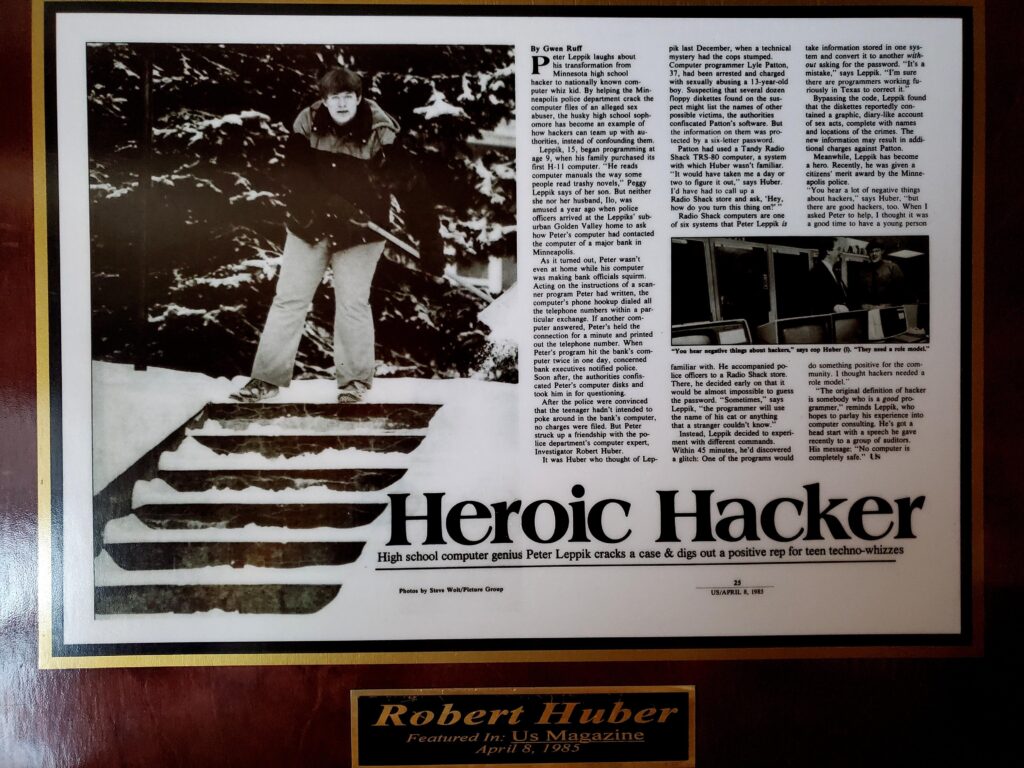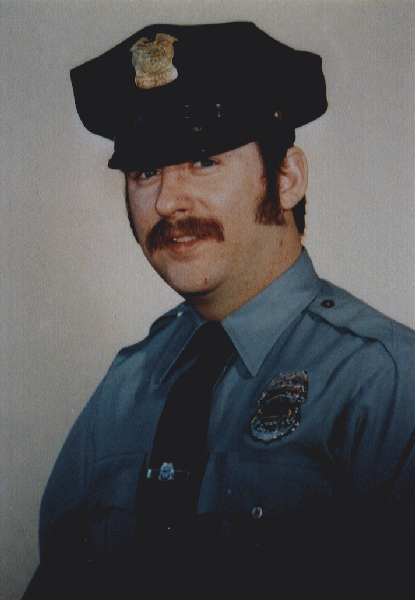We were fortunate this week to visit with Retired Officer Robert Huber to learn about the MPD’s early computer systems and hear about an interesting computer-crime investigation of his which made headlines both in Minneapolis and nationally.
Office Huber was studying at what was then St. Thomas College (now University) in a pre-med program when friends of his persuaded him to join them at the Minneapolis Police Department. He had always been good at mathematics and so when the Department gave him the opportunity through the Law Enforcement Educational Program to go back to college he resumed his education part-time focusing on mathematics and computer languages.
Officer Huber was known around the Department as someone who understood computing. In 1979, the Deputy Chief in charge of Technology tapped Officer Huber to work on a new initiative called the Integrated Criminal Apprehension Program or ICAP. The idea behind ICAP was to use data about crime such as time of day, location, type of crime, perpetrator behaviors to quickly understand and address crime trends.
After this, Officer Huber went on to help develop a Computer-Aided Crime Analysis and Reporting System which gave the Department the distinction of being only the second police force in the nation to leverage computer systems for crime analysis. With the work of Officer Huber, the Department was able to replace its manual pin-map system with a digitized map system employing elements of predictive analysis.
Before November 31, 1982, if you had an emergency, you would open up your telephone book to find the number for the Minneapolis Police Department, The Minneapolis Fire Department or an ambulance and then call the appropriate seven-digit number for your particular emergency.
The Minneapolis Police Department was the first Department in the nation to make the move to a 911 system and Officer Huber worked on the integration of the 911 system with a computer-aided dispatch system.
Officer Huber was fortunate to be asked by the FBI to join its computer-crime course at their Academy in Quantico, Virginia. He brought his new knowledge back to the Department and used it to help solve computer-crimes.

In 1985, Time Magazine told the story of an interesting computer-crime case that Officer Robert Huber worked on.
They wrote:
“Peggy Leppik will never forget the day in 1983 when she opened the door of her house in suburban Golden Valley, Minnesota and found three Minneapolis police detectives waiting outside. Someone with a home computer and modem had tapped into the computer of a Minneapolis bank by telephone and police had traced the calls to her 14-year-old son Peter. “My heart stopped,” she says. “But I was confident from the beginning that he hadn’t done anything malicious. I have lots of faith and trust in Peter.” No charges were filed against Leppik and his mother’s faith was dramatically rewarded last week when his latest exploits brought strangers of another sort to her door: reporters and camera crews eager to learn how the precocious lad, now 15, had become a hacker hero, helping the Minneapolis police in a case against a suspected child molester.
Last month a 37-year-old Minneapolis computer programmer was arrested on charges of sexual misconduct with a 13-year-old boy. In the man’s home, police found a Tandy RadioShack TRS 80 Model III computer and several dozen floppy disks, which they suspected might contain incriminating evidence. The suspect, however, had locked his disks with a special software program. Only someone who knew his six letter password, which he refused to reveal, could read the information they contained.
The police department’s resident computer expert Officer Robert Huber was not familiar with the RadioShack computer system, but knew someone who might be: Peter Leppik, whom he had met during the bank escapade and since befriended. “After all the unfavorable stories about computer kids”, says Huber, “it seems like an ideal time to have a younger person like Peter do something positive for the community”.
The police drove Leppik to a nearby RadioShack store, which had offered the use of one of its machines. It took him less than a half an hour to familiarize himself with the TRS 80 disk operating system, the master program that tells the computer how to store and retrieve data. Said Leppik, “I realized right away that there was no way I could get the password by trying to guess that so I had to find a way around it”. After loading the data from an operating system disk (used for housekeeping chores as making backup copies of valuable disks) into the computer he placed a disk belonging to the suspect in one of the machine’s disk drives and a blank disc in the other. He then called up the operating system’s menu which lists on the screen all of the commands the system responds to. One after another he typed the command into the computer. When he typed BACKUP the computer responded by asking for the unknown password. The same thing happened when he typed COPY.”
Finally Leppik tried CONVERT a program that RadioShack distributed in 1982 when it introduced a new version of its operating system. It converts files written under the old version to the format used by the new one. But as Leppik discovered, RadioShack had neglected to build into CONVERT the password protection feature. As a result, at the command CONVERT, the computer whirred obediently, picking up the data from the locked disk and transferring it in the new format to a blank disk. From there, Leppik was able to retrieve it and display it on the screen. Only 45 minutes had elapsed from the time he entered the store.
The content of the first suspect disk turned out to be a diary containing page after page of sex-related material that included male first names, general locations and descriptions of sex acts written in graphic detail. If the accounts on the disk prove to be fact, not fantasy, police will use them to bring additional charges against the suspect. Leppik meanwhile is trying to keep things in perspective and not get a swelled head. Says he, “I’m still doing the dishes and making my own bed.”

This story was also featured in US Magazine.

This was just one of the many interesting cases in the exciting career of Officer Robert Huber.

The Minneapolis Police Museum wishes to thank Retired Officer Robert Huber for the opportunity to interview him and for the use of the photographs in this story.
